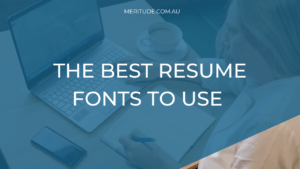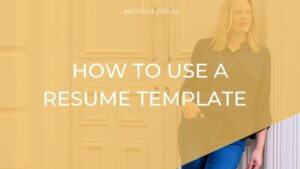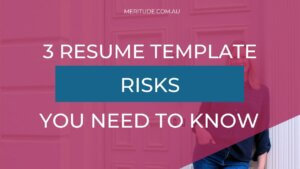Our last post 3 Important Tips When Creating Cover Letters talked about how the role of the cover letter has changed. Specifically, how they take second place to a resume and will be skim read.
Cover letters are still important as part of your application. They give the opportunity to explain why you want this position, reasons for career changes or work gaps etc. In addition, some companies will still ask for them as part of your application (including government).
Still not convinced you need a cover letter? Ok, well try this. Go to your favouritejob board and type “cover letter” into the keyword bar. Bet you get thousands of listings that ask for a cover letter to be included with the position.
At the time of this post I did exactly that on www.seek.com.au and came up with 11,000 + listings. Just to be sure, I clicked into a bunch of them and there at the end of the listing was – To apply for this role submit your résumé and cover letter via the ‘Apply for this job’ button.
Many employers still want job seekers to provide a cover letter with their application. In addition, having been at the face of internal company recruitment, 90% of candidates don’t send a cover letter.
This means you have a great opportunity to stand out, just by including this single document.
So what goes into a cover letter and how are they structured? Well, if you haven’t read my last post 3 Important Tips When Creating Cover Letters start there first for some of the critical do’s and don’ts.
[clickToTweet tweet=”Writing a quality cover letter is challenging! #newjob #jobhuntingtip” quote=”Writing a quality cover letter is challenging!”] Moving on….how do you create a cover letter? I want to make it clear that I won’t cover all techniques in this post. Specifically those people with complex work history. That requires a book! But I am going to get you started with a very basic, simple, easy cover letter structure that you can expand on.
First up, your cover letter is written in the first person and is a typical business letter format. So standard business letter writing rules apply.
Below is a basic cover letter formula to follow: What Else Can Your Cover Letter Include? You’ll notice that there is lots of room to include added information that is specific to your situation. The intro and second paragraph should always be dedicated to highlighting your experience and so on.
But you may need to answer some key questions in your cover letter and a third or forth paragraph is the place to put those.
Examples include:
- Explaining you live in another city and willing to relocate
- Willingness or ability to travel for the position
- Type of position you are looking for ie: part-time, contract, telecommute etc
- Answers to questions asked by the company in the advertisement
- Explain employment gaps, changing industries or other career blemishes etc
- Highlight specific points that match the companies hiring criteria
Treat your cover letter like any piece of business correspondence. It should have a professional appearance, tone, and accurate grammar/punctuation.
Make sure you run your cover letter through this checklist before you hit the send button:
- Use consistent margins and font
- Includes relevant skills and experience for the position you are applying
- Address the letter to the right contacts name
- Include the correct company address (use google to find the right one)





